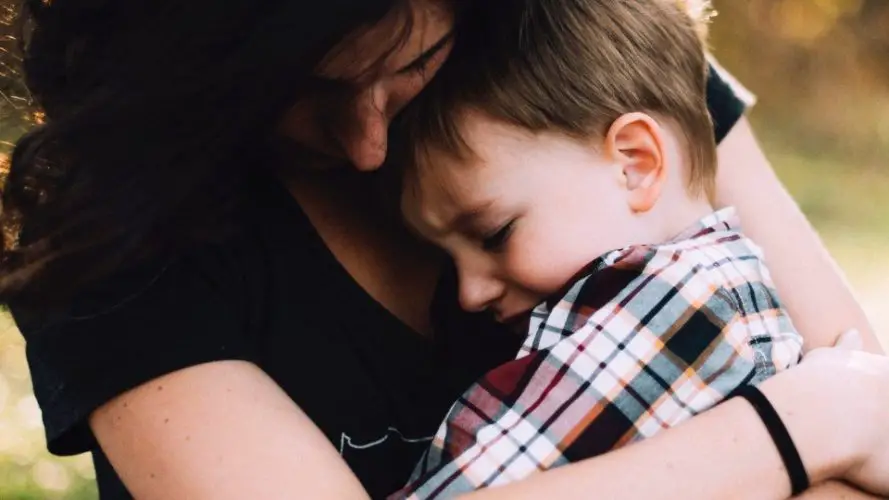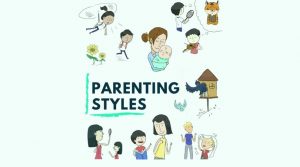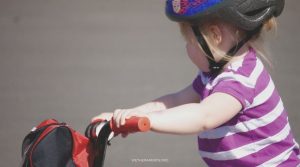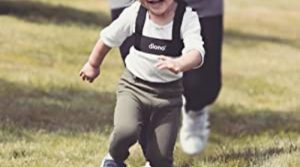Learning to navigate emotions is an important step in childhood development. As toddlers interact with their world and other people, they begin to experience their own emotions and those of others. Helping them identify emotions and learn how to handle frustration, anger, sadness and excitement can allow them to process their feelings in a healthy way and develop the ability to see emotional cues in others. There are a number of activities focusing on emotions that can benefit your toddler – check out these 10 suggestions to help them learn.
Try these at home
1. Smiley face, frowny face emotion identification
One of the main ways that human beings express emotion is through body language, and these are some of the earliest cues toddlers are able to interpret. Using a series of flash cards with simple faces depicting emotions can help them to learn what certain emotions look like. A furrowed brow and frown may suggest an angry face, while tears suggest a sad face and a big grin indicates happiness. It’s a good time to talk about what makes toddlers feel good and bad and learn about their emotional triggers.
2. Songs about feelings
Toddlers learn very well through music and repetition, and there are countless children’s tunes focused on feelings and how to cope with them. Singing songs about how to cope with unpleasant emotions and how to help others feel better can provide kids with actionable and memorable coping mechanisms as well as a sense of empathy toward other children. You can replace lyrics to familiar tunes with words about emotions or check out some videos on YouTube.
3. Books about feelings
Reading with toddlers is a great way to boost their language development skills. It’s also a way to talk about all kinds of feelings they may be experiencing. There are many books for kids that specialize in talking about frustration, grief, jealousy and other complex emotions toddlers may struggle to vocalize. Reading books like these together can help your toddler realize that their emotions are normal and give them the vocabulary to express them in a healthy way.
4. A Calm down area
Great for tense toddlers, a calm down area is a quiet space with limited stimulus where younger kids can go to engage in soothing activities and express their feelings. Frustration is a natural part of development for toddlers, as they are eager to explore but limited by their capabilities. By using the calm down area consistently, toddlers won’t feel like they’re being punished for being mad. Instead, their frustration will be redirected toward soothing sensory stimulus like quiet music and soft objects as they take time to restore inner peace. Eventually, it’s likely they’ll start to recognize their own emotions and go to the calm down area on their own.
5. Gratitude jar
Big emotions aren’t always negative – toddlers can be filled with overwhelming joy, happiness and love. They’re often the first to suggest giving a special present or tell you when you look nice. Working on a gratitude jar can help take time to acknowledge and be grateful for joys as a family and increase feelings of closeness. Every day, take a moment to write down together something that your toddler is happy about. On a bad day, take the jar off the shelf and read the entries together to remind them of joyful memories and things they love.
6. Feelings chart
We’ve all seen the feelings charts commonly used in therapy offices – they have great use, especially for children. When we don’t take time to identify and handle our feelings, vague frustration and unease can take over and make us miserable. The same is true for our toddlers! A simple feelings chart, such as a poster board that says “I Feel ______” with flash cards they can add to indicate their mood, will prompt them to think about how they are feeling and will give them a way to share moods with you without having to verbalize, which can be a struggle for a frustrated child.
7. Daily debriefs
If your toddler goes to day care or stays with another family member while you are working, you may not directly see their emotional reactions to certain events. Other adults may follow up with you about an incident, but it’s important to follow up with your toddler as well, asking them how their day went, about any events that were upsetting and about their feelings. If they had a tantrum, encourage them to express why they were frustrated. Taking time to have daily debriefs will make your toddler feel like their emotions are important and gives the opportunity to teach age-appropriate coping strategies.
8. Building emotional vocabulary
As toddlers are still developing language, they begin to feel more complex emotions that they don’t have words to describe. This can lead to behavior that some perceive as the “terrible twos”, like lashing out physically and being uncooperative. Building emotional vocabulary is achieved through a combination of strategies. Take time to perceive your child’s emotional cues and be patient with them. Matching their intensity is destructive, even when you’re frustrated – your child needs you to model best behavior. Books, songs, rhymes or simple conversations can all help give them the words to tell you how they’re feeling.
9. Making worry stones
Anxieties are normal in young children, and finding ways to cope with feelings of fear is essential to their mental health. Making worry stones together is a good way to engage in a soothing physical activity. Roll some air drying clay between your hands to make a round pebble, having your toddler do the same thing. Encourage them to stay calm with closed eyes, rolling the clay and breathing in and out. Finally, they will push their thumb into the stone to “give their worries” to the clay. When it hardens, they can carry their worry stone to remind them that they are strong – knowing you have one to match can help with separation anxiety.
10. Zen bottles
Reaching calm can be a struggle for some toddlers, but there are calming sensory toys you can make that they’ll love. In some cases, they can even help! For cool, crafty zen bottles, just take sturdy plastic bottles with screw tops and fill them with 1 part glue, 3 parts warm water and tons of glitter, beads or whatever else you’d like to add. Once they’re filled to the top, put a little gorilla glue on the threads of the cap and screw it on for a sensory bottle that’s fully secured! Have toddlers help you pour glitter through a funnel or drop beads in the bottle to get involved.








